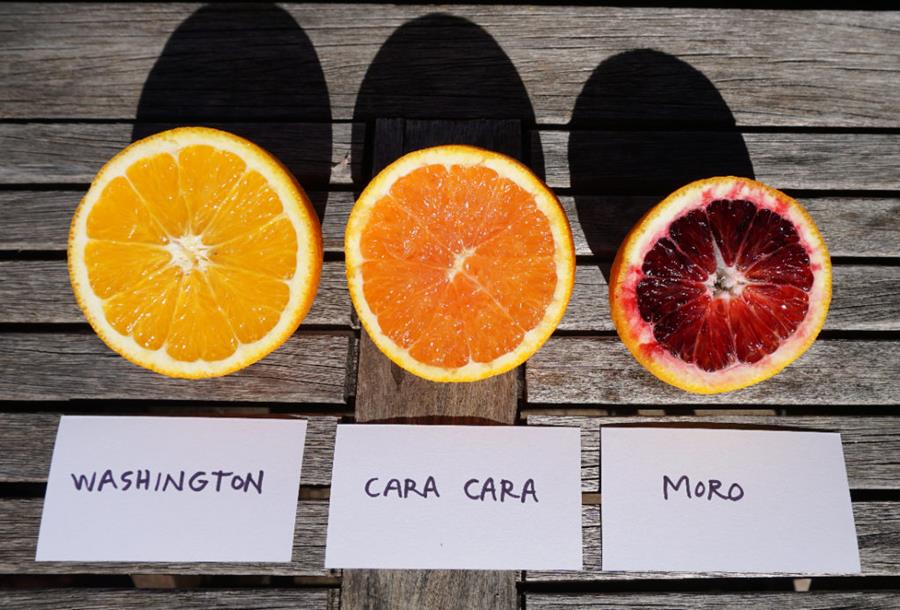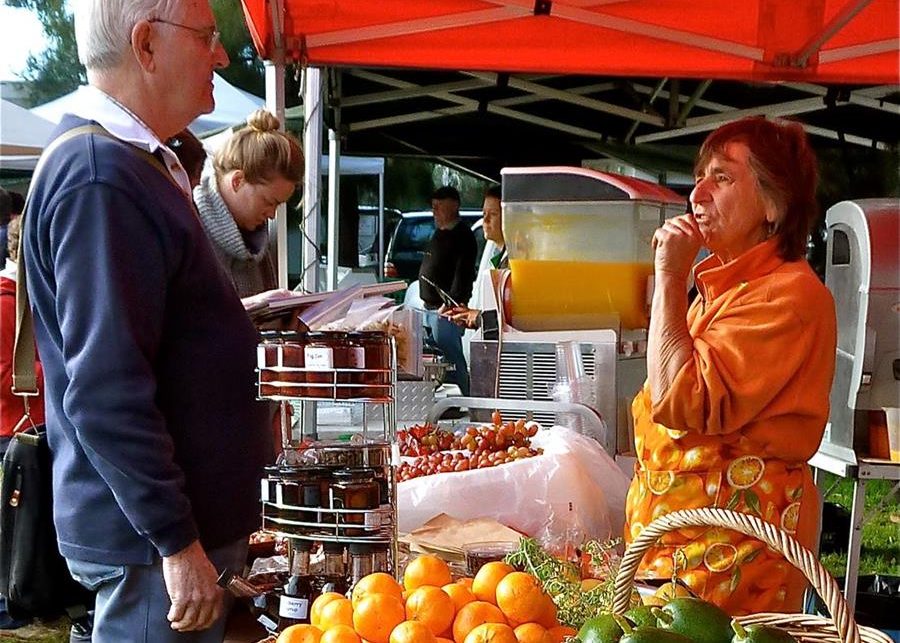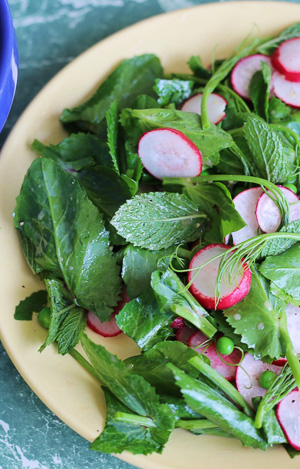
Navel gazing
Now it’d be reasonable to think that Cara Cara and Blood Oranges, with their characteristic coloured fleshes, might have similar thing goings on, but you’d be dead wrong.
Cara Cara’s get their colour from lycopene, a carrotenoid, also responsible for making tomatoes red and papayas orange, while Blood Oranges get their pinky hue from anthocyanins, flavanoids responsible for making blueberries blue and purple cabbage purple.*
Origin-story wise, these two could also not be more different – whereas Blood Oranges have been grown for over a thousand years in Sicily and Spain the Cara Cara is literally the newest kid in the fruit bowl…
….It was in in rural Venezuela back in 1972 on the Hacienda Cara Cara that a farmer, possibly called Domingas, showed two visiting citrus scientists some red fleshed navel oranges he’d found growing on a branch of a regular Washington Navel tree.
The scientists, Professor Juan de Dios Holquist and Dr. Ary Salibe, identified the orange as a “bud sport”, a natural genetic mutation that occurs on a single limb of an otherwsie normal tree.
As well as its pinky-red flesh the mutant orange was naturally sweet and easy to peel – the scientists, juice on their faces, looked at each other in disbelief.
Despite sharing their incredible news quite widely Dios Holquist and Salibe’s discovery remained a curiosity in scientific citrus circles until it came to the attention of the Head of Tree Crops at the University of Florida and future inductee into the Florida Citrus Hall of Fame, Dr. Alfred “Al” Krezdorn.
A very excited Al Krezdorn flew down to Venezuela in 1977 and according to his biography, sort of bumped into the Cara Cara tree. Krezdorn brought back five sticks of Cara Cara budwood with the aim of propagating the new orange in Florida but immediately ran into a snag.
The budwood was found to be infected with a harmful citrus virus and could not be released for fear of spreading it into Florida’s orange orchards.
Not to be deterred Krezdorn persisted putting the Cara Cara sticks into quarantine and going through the extraordinarily painstaking process of cleaning and regrafting virus-free plant tissue onto new rootstock.
Exactly ten years later the first of Krezdorn’s Cara Cara trees were ready to be released to Florida’s citrus growers.
From those original five budwood cuttings healthy Cara Cara trees made their way west to California, then to Spain, South Africa and Australia. Curiously Cara Caras were never embraced by Venezuelan growers.
By the early 2000’s, after a stint as a favourite ingredient of edgy chefs and citrus-curious foodies, Al Krezdorn’s patience paid off and Cara Cara oranges finally became widely available in the mainstream grocery market.
This month at Fair Food it’s Cara Cara season. Our Cara Cara’s are grown by Gaby Robb aka The Orange Lady and her family in Red Cliffs in Millewa-Mallee country.
The beauty of Gaby’s Cara Cara’s is that unlike fruit from the large commercial citrus packers who harvest green for their coolstores – Gaby’s small scale farm means she can let her oranges ripen on the tree, picking to order and driving them down for her Melbourne customers every weekend.
You can find Gaby’s Cara Cara oranges here and on weekends you can meet Gaby and her family in person at various Melbourne Farmer’s Market locations.
Have a great week
Chris
*The colour of plants that contain anthocyanins depends on their pH: acidic = red, neutral = purple, alkaline = blue.

